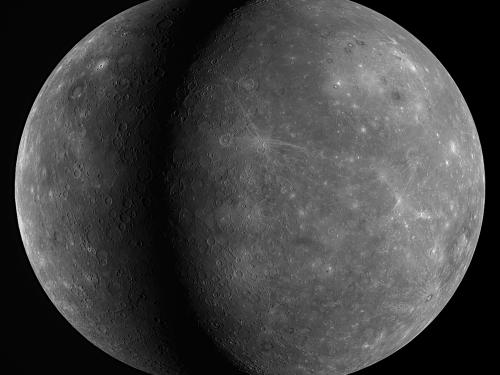Showing 51 - 60 of 488

News Item
The Smithsonian’s National Air and Space Museum has received $5 million from David M. Rubenstein in support of the newly redesigned “The Wright Brothers & the Invention of the Aerial Age” exhibition. The gift will contribute to the safe preservation and display of the 1903 Wright Flyer, one of the Smithsonian’s iconic artifacts and the centerpiece of the gallery. The redesign of the exhibition is part of the museum’s ongoing transformation of all its galleries in the flagship building in Washington, D.C., and is scheduled to open in 2022.

News Item
The Smithsonian’s National Air and Space Museum has received $10 million from the Kislak Family Foundation to support the creation of the new “World War II in the Air” exhibition. Construction on the gallery is scheduled to begin in 2022 and is part of the museum’s ongoing transformation of all its galleries at the flagship building in Washington, D.C.

News Item
The Smithsonian’s National Air and Space Museum will host programming and offer a variety of resources and expertise to coincide with the landing of the Perseverance rover on Mars, Thursday, Feb. 18. The museum’s scientists are involved in a number of Mars research missions with NASA and will share their insights on this current endeavor. A variety of programming will be available for all ages beginning Thursday, Feb. 4, and special Perseverance-themed merchandise will go on sale for a limited time starting Thursday, Feb. 11.

News Item
Findings from a recently published paper by Smithsonian senior scientist Thomas R. Watters reveal that Mercury has managed to retain much more of its interior heat than previously thought. Images and data obtained by NASA’s Mercury Surface, Space Environment, Geochemistry and Ranging (MESSENGER) spacecraft show that Mercury has experienced only a modest amount of global contraction. This is in contrast to other studies that cite large amounts of contraction, suggesting Mercury cooled more quickly. Mercury’s modest amount of global contraction suggests an evolutionary path for small rocky planets where interior heat is retained. “A case for limited global contraction of Mercury” was published in the journal Communications Earth & Environment—Nature.

News Item
The Smithsonian’s National Air and Space Museum welcomed the Blue Angels’ F/A-18C Hornet into the national collection. This is the first “Blue Angels” aircraft and the first F-18 the museum has acquired. The recently retired F/A-18C flew into Dulles, Nov. 18, in preparation for display at the museum’s Udvar-Hazy Center in Chantilly, VA at a later date.

News Item
The Smithsonian’s National Air and Space Museum and National Museum of African American History and Culture will collaborate with NASA astronaut Victor Glover to help document his historic first trip to the International Space Station (ISS) through educational programming and digital content. Glover is scheduled to launch to the International Space Station Nov. 14 and will become the first Black astronaut to live on the ISS as part of a long-duration crew. The collaboration with Glover and NASA will allow the two museums to tell the story of his first trip to the ISS, and it will explore themes of teamwork, artistic expression and resilience.

News Item
The Smithsonian’s National Air and Space Museum will host “Air & Scare at Home” in lieu of its annual in-person Halloween event. This reformatted virtual “Air & Scare” will feature online downloadable activities, live digital programming and a virtual costume and pumpkin decorating contest for sweet prizes.

News Item
The Smithsonian’s National Air and Space Museum and Grammy award-winning musician and producer Diplo have released Under Ancient Skies across all major digital streaming services, including Spotify, Apple Music and YouTube.

News Item
The Smithsonian’s National Air and Space Museum has launched new virtual initiatives for the 2020–2021 school year that will increase educators’ access to museum content, resources and artifacts. Virtual field trips and story times are now available to reserve for classrooms and in-home education. Learning Guides, a new season of the “STEM in 30” webcast series and curated content released monthly will also be available throughout the school year on the museum’s website.

